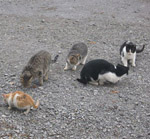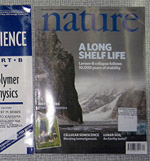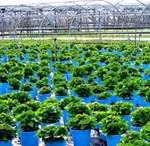Making commercial plantations better for birds
 Coffee plantation, Kauaʻi, Hawaii. Image credit, Lukas.From palm oil to eucalyptus to rubber, researchers have generally found that commercial plantations are bad for biodiversity compared to natural forests. Now a new study in the journal Conservation Biology finds that increasing the structural complexity of plantations could make them better for birds.
Coffee plantation, Kauaʻi, Hawaii. Image credit, Lukas.From palm oil to eucalyptus to rubber, researchers have generally found that commercial plantations are bad for biodiversity compared to natural forests. Now a new study in the journal Conservation Biology finds that increasing the structural complexity of plantations could make them better for birds.
The study reflects a pragmatic way of thinking on the part of many conservationists who accept the reality that plantations are here to stay and maybe they can complement protected areas in conserving biodiversity. Plantations can come in different flavors - from simplistic monocultures to agroforesty systems with multiple vegetation strata.
The researchers conducted a meta-analysis of 209 case studies to compare bird assemblages in simple and complex plantations along with natural forests. Some case studies compared bird assemblages in simple and complex plantations. Others looked at plantations versus forests. In terms of plantations, the case studies focused on rubber, palm oil, coffee, cacao, eucalyptus, conifers, and other timber species.
According to the meta-analysis, in 79% of the studies, structurally complex plantations had greater number of bird species than plantations that were structurally simple, and in 92% of the studies they had higher avian abundance. The researchers write:
"Plantations with a more complex structure hold more species than simple ones, regardless of the type of plantation. This fact could promote environmentally friendlier plantations, particularly because there are few opportunities to conserve relatively undisturbed habitat"
Overall, though, they found that natural forests were better for bird conservation than plantations. While forests had similar avian abundance as plantations, in 72% of the case studies they had greater number of species. Also, plantations were more likely to have birds of lesser conservation concern.
Interestingly, these results contrast with a recent study we profiled, which found that shade coffee plantations provided high quality wintering habitat for migratory birds. The meta-analysis, though, only points to general findings and not hard and fast rules.
For example, in 28% of the case studies, forests did not have greater avian species richness than plantations. It would be interesting to know what traits those species-rich plantations had in common but this was beyond the scope of the meta-analysis.
Nevertheless, this research sends an important message about commercial plantations. The authors write,
"Management practices that allow or promote structural complexity and understory growth should be promoted to aid in conserving biodiversity. These practices could help shift the biodiversity-impoverished plantations to a less-hostile condition."
--Reviewed by Rob Goldstein
NÁJERA, A., & SIMONETTI, J. (2009). Enhancing Avifauna in Commercial Plantations Conservation Biology DOI: 10.1111/j.1523-1739.2009.01350.x




 Birds
Birds
Reader Comments